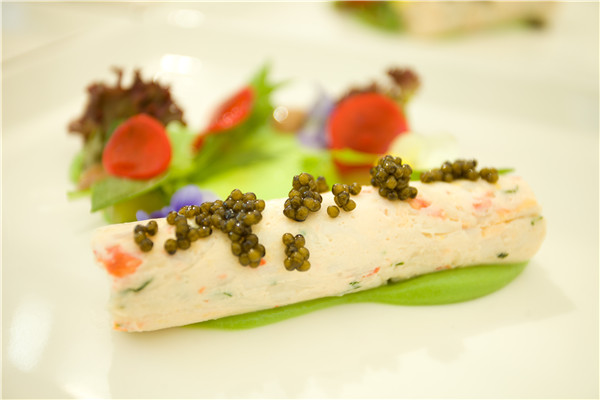Fishy business
 |
|
A crab roll highlighted with dollops of caviar on the top. [Photo provided to China Daily] |
At the farm, once the fish start producing roe, they make a lot of it - the carcasses seem almost hollow once the fish eggs are carved out in a very surgical procedure. The face-masked workers have it down pat: It takes a little more than a minute from the first incision until the empty carcass glides away on a conveyor belt, making way for the next bounty of fresh roe.
Most in our group are surprised to learn that fresh sturgeon caviar is only slightly salty: The familiar saline taste comes from packing the harvested fish eggs in salt for several weeks of curing.
While the group's first day on the waters of the 573 square km lake was all about fish, Day 2 was all about caviar. After a demonstration of harvesting to curing in the processing plant, a sumptuous luncheon was prepared by the two Shangri-La chefs. The tasting began with nibbles of each of the five caviar products, served with glasses of prosecco.
"You need that acidity and that freshness to accompany caviar - like you do with oysters," says chef Ang.
After the caviar tasting, the formal lunch includes an Alaskan king crab roll highlighted with three dollops of caviar on top, presented with a colorful salad to make the plate a visual treat. The dish is featured on Pavia's new menu at Grill 79, the Western restaurant in the China World Summit Wing in Beijing.
The vast majority of the finished caviar goes to the export market - Russia, France, Germany and elsewhere - and different countries have their preferred tastes. Some species produce caviar with a denser, chewier texture; one has a distinctly nutty taste, another is more buttery; yet another retains freshness even after curing.
Contact the writer at michaelpeters@chinadaily.com.cn
















